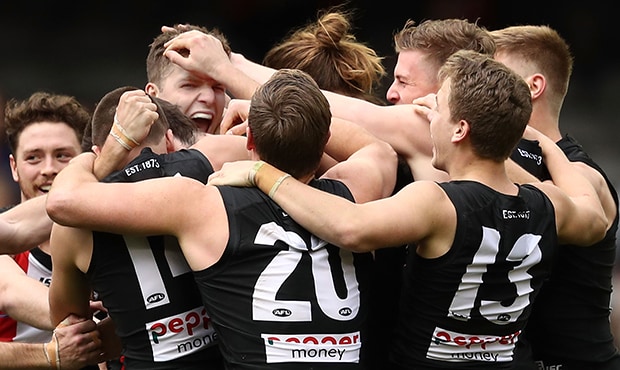• The full 2017 Toyota AFL Premiership Fixture
• The 21 must-watch matches
• Prime-time kings: Dogs and Swans the timeslot winners
• WATCH: The 2017 blockbusters to look forward to
• 2017 fixture: Club-by-club verdict
IN CANBERRA they don't refer to federal budgets by their years, but by the Treasurer and whichever number budget they are delivering.
So you had 'Peter Costello's third budget', 'Joe Hockey's second', 'Scott Morrison's first' and so on and so forth.
At AFL House on Thursday, they were referring the release of the 2017 fixture as 'Travis Auld's first'.
Certainly, the former Gold Coast chief executive, now the AFL's general manager of clubs and operations, looked tired, but relieved when the complicated document was handed down.
He should be well pleased with his first-up effort. Every AFL fixture has its quirks but this one stuck true to the key philosophies of rewarding the clubs that play good football with the prized timeslots and playing the games at times when fans want them.
So we're getting a large dose of the Western Bulldogs on Friday nights with eight appearances and another on a Thursday night, while the Sydney Swans figure in 10 prime-time games – eight Fridays and two Thursdays.
Giving the people what they want seems to be the AFL's mantra and given the entertaining brand of footy the Bulldogs played en route to their fairytale premiership this year and the magic of Lance Franklin at the peak of his powers for the Swans, the AFL has rightly prioritorised good teams and great viewing over big clubs.
By the same token, Greater Western Sydney makes its prime-time debut with three Friday night games including the first ever in Canberra in a clash with the Western Bulldogs that might be the 2017 Grand Final preview. Already the rivalry between these two clubs runs deep.
And the AFL has backed in the entertaining St Kilda with four Friday night games on the basis that a ninth-placed finish and a heap of emerging young talent should elevate the Saints into the September action next year.
The Saints have been rewarded for their exciting brand of footy. Picture: AFL Photos
Those clubs and others such as Adelaide can look forward to its share of blockbuster action in 2017. The spin from the clubs that don't see much of the bright lights is that their draws are 'family friendly'. Carlton, with one Thursday and one Friday night game and Collingwood, whose three prime-time games are done and dusted by round three, were both at pains on Thursday to say that when it comes to their draws for next season, the fans are the winners.
The same for Richmond, banished from Friday nights entirely on the back of its disappointing 2016 season. The Tigers open their season with two Thursday night games and are pretty much 'off Broadway' for the rest of the year. It's a big comedown from their seven prime-time games this year.
The Tigers are 'off Broadway' following a disastrous 2016 season. Picture: AFL Photos
Thursday night football is the new wrinkle in 2017. We have had it for a few years already but with eight games next season it becomes an established part of the fixture with two early season games at the MCG, Easter Thursday in Perth and then five straight weeks from rounds 10-14 clashing with school holidays around Australia. TV ratings on Thursday nights on free-to-air TV only lag Friday nights by about 80,000 – or roughly 10 per cent - making it a no-brainer for the AFL to continue down that path.
But in an unusual development at AFL HQ, the word 'ceiling' was mentioned at the fixture announcement and eight Thursdays a year might be as much as we can expect now and in the future.
The next big project for the AFL is how to get a 17-5 fixture model up and going. AFL chief executive Gillon McLachlan spoke at Thursday's launch and said a working party would soon be established to explore what models might breathe new life into the final few weeks of the season, especially for the clubs already out of the finals race.
From a football point of view it is the logical next step for the AFL fixture. But commercial agreements with venues, sponsors and broadcasters are such a critical part of the AFL landscape that creating a working and sustainable model that is fair to all clubs will take time.
But the starting point is that there is a strong will to get it done and when you have that, then the trust and the expectation is that they will find a way.
Auld's first AFL fixture release was noteworthy. His second might be spectacular.



